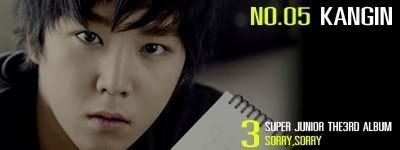- Interested In: Fans
- Member Since: Dec 2007
- Company: Sm Entertainment, Avex Trax
- Super Junior's URL: http://profiles.friendster.com/suju13elf
- Occupation:
dancers, singers, band
- Affiliations:
Super Junior, SM entertainment
- Favorite Movies:
Attack on the pin-up boys
- Favorite Music:
their songs are too many to be mention.....all their songs!!!
- Favorite TV Shows:
KM: Super Junior show, Princess diary, Super Adonis Camp, Idol World...M.net: Mystery 6, Super Junior Mini Drama, Super Summer...SBS: Full House, Sunday is good- Explore the Human Body...Channel [V]: Top 5@5
- About Me:
Name: 슈퍼주니어 Super Junior, previously known as SuperJunior05
Pronunciation: shoo-puh-joo-nee-uh
Short form: 슈주 Suju
Group Debut: November 6, 2005 (broadcasted on SBS Inkigayo, ); they unofficially debuted with a dance-only / gag-skit event on September 11, 2005, but it wasn't aired until May 16, 2006 on a Special M.Net program called (said performance didn't feature: Kim Ryeowook — who joined the group at the last minute, nor Cho Kyuhyun — who was added in the middle of 2006)
Group Members: 이특 Leeteuk | 희철 Heechul | 한긍 Han Geng or 한경 Hankyung | 예성 Yesung | 강인 Kangin | 신동 Shindong
——————————-성민 Sungmin | 은혁 Eunhyuk | 시원 Siwon | 동해 Donghae | 려욱 Ryeowook | 기범 Kibum | 규현 Kyuhyun
Company & Management: SM엔터테인먼트 SM Entertainment
Official Fanclub: 엘프 E.L.F. (EverLasting Friends), established on June 2, 2006
Official Balloon Color: 펄 사파이어 블루 Pearl Sapphire Blue
Official Korean Websites: http://www.super-junior.co.kr (Super Junior, SM) | http://t.super-junior.co.kr (Super Junior - T, SM)
Official Foreign Websites: http://www.avex.com.tw/superjunior (Super Junior, Avex Taiwan) | http://avexnet.or.jp/superjunior (Super Junior, Avex Japan)
"May be taken out with full and proper credits"
1) LEETEUK (이특); LI TE -- 利 (merit) 特 (special) → Meritly Special
2) HEECHUL (희철); XI CHE -- 希 (hope) 澈 (clear) → Hopeful
3) HANKYUNG (한경); HAN GENG -- 韓 (surname) 庚 (age) → Heavenly Age
4) YESUNG (예성); YI SHENG -- 藝 (art) 聲 (voice) → Art-like Voice
5) KANGIN (강인); QIANG REN -- 強 (strength) 仁 (humaneness) → Humane Strength
6) SHINDONG (신동); SHEN TONG -- 神 (god) 童 (child) → Prodigy
7) SUNGMIN (성민); SHENG MIN -- 晟 (splendor) 敏 (keen) → Sharpness
8) EUNHYUK (은혁); YIN HE -- 銀 (silver) 赫 (radiant) → Radiant Silver
9) DONGHAE (동해); DONG HAI -- 東 (east) 海 (sea) → East Sea
10) SIWON (시원); SHI YUAN -- 始 (begin) 源 (origin) → Origin
11) RYEOWOOK (려욱); LI XU -- 厲 (severe) 旭 (sunrise) → Powerful Sunrise
12) KIBUM (기범); QI FAN -- 起 (rise) 範 (rule) → Rising Law
13) KYUHYUN (규현); GUI XIAN -- 圭 (jade tablet) 賢 (worthy) → Worthy Like Jade
(edit 2008/05/10: Changed Ryeowook's name from "Sharp Brilliance" to "Powerful Sunrise" because it makes sense more, lol. And I believe 旭 is a word that leans more towards "sunrise" than "brilliance".)
And just because I want to, the following are their romanized Cantonese names.
1) LEETEUK → Lei Dak
2) HEECHUL → Hae Chit
3) HANKYUNG → Hon Gang
4) YESUNG → Ngai Sing
5) KANGIN → Keung Yan
6) SHINDONG → San Tung
7) SUNGMIN → Sing Man
8) EUNHYUK → Ngan Haak
9) DONGHAE → Dung Hoi
10) SIWON → Chi Yun
11) RYEOWOOK → Lai Yuk
12) KIBUM → Hae Faan
13) KYUHYUN → Gwai Yin
credits by blabby-Iwy






- Who I Want to Meet:

(이특 is actually pronounced Eeteuk)
Real Name: Park Jungsu (박정수/朴 正 秀)
Nickname(s): Angel without Wings (날개잃은천사), Gaeteuk (개특, named by Heechul), Special Leader (특별한리더), Peter Pan, Ori (오리 aka Duck)
Date of Birth: July 1, 1983
Place of Birth: Seoul (서울)
Height: 178 cm/5' 10.1" in (real height 176 cm/5' 9.3" in or so he claims :))
Weight: 59 kg/129.8 lb
Blood Type: A
Siblings: older sister Park Inyoung (1982)
Specialty/Hobby: Piano, Composition, Listening to music, Singing
Education: Transferred from Paekche Institute of the Arts (백제예술대학) to Inha University (인하대학교)
Misc. Info.: Leeteuk was wandering around lost in the streets of Seoul when an SM scout saw him and gave him a business card. He auditioned in 2000 and made his first appearance the same year as an extra sitting in an auditorium in MBC's "All About Eve." His stage name Eeteuk (이특) means "special."
Real Name: Kim Heechul (김희철/金 希 澈)
Nickname(s): Heenim (희님), Cinderella (신데렐라), Flower (꽃), Kim Pink (김분홍), Kim Moodswing (김기복), Kim Cherry (from Youngstreet), Snake (from the Zodiac), Heerobbong (part of the Bbong brothers with Donghae and U-Know Yunho), Heebongie Hyung (Yesung's nickname for Heechul)
Date of Birth: July 10, 1983
Place of Birth: Hoengseong County, Kangwondo (강원도 횡성군); grew up in Wonju, Kangwondo (강원도 원주) where his parents still reside
Height: 179 cm/5' 10.5" in (stated in his 100Q/100A from August 26, 2007 that his height is actually 178 cm/5' 10.1")
Weight: 60 kg/132 lb
Blood Type: AB
Siblings: older sister Kim Heejin (1982)
Pets: Heebum (Russian Blue cat) since 11/11/06, Champagne (Siamese cat) since 7/26/08; used to have Yamchae (Russian Blue cat) given to him by fans from 7/13/05 to 11/3/05, but he ran away while Heechul was away for a few days filming.
Specialty/Hobby: Writing poems, Writing fairy tales, Computer games
Education: Sangji University (상지대학교); reportedly graduated in 2008.
Official Website: http://www.rellagyo.com
Soompi Thread: http://www.soompi.com/forums/index.php?showtopic=23645
Misc. Info.: On a whim, Heechul searched the internet for entertainment companies and it so happened that SM was having open auditions so he went with his friends to Seoul to sightsee/audition. Being unfamiliar with the area, he got lost and missed the open audition hours. They told him that it was too late, but according to him, took one look at his face and changed their minds :) He was allowed to audition and was cast through Starlight Casting System in October 2002. He debuted as an actor on March 6, 2005 through the youth drama KBS's "Banolim 2" as Baek Jinwoo.
(lately they've been officially going by the Chinese pronunciation of his name, Han Geng, but in Korean it is pronounced Hankyung)
Real Name: Han Geng (한긍/韩 庚)
Nickname(s): Beijing Fried Rice (북경밥 aka Bukkyungbap; came during "Full House," from Hangeng mispronouncing and Heechul mishearing 볶음밥 aka Bokkeumbap which just means fried rice in Korean), Dragon (from the Zodiac)
Date of Birth: February 9, 1984
Place of Birth: Mudanjiang in the Hei Long Jiang (黑龙江) Province, located in the northeastern part of China
Height: 181 cm/5' 11.3"
Weight: 66 kg/145.2 lbs
Blood Type: B (he originally thought he was O then A. It was only in summer 2006 that he found out that his blood type was B.)
Siblings: only child
Pets: used to have Rong Rong (dog) which was given to him by fans for a little while in March-June 2007, but had to give him away because he wasn't home enough to take care of him; Mao Mao (lives with Hankyung's parents in China)
Specialty/Hobby: Chinese traditional dance, Ballet, Computer games
Education: Central University for Nationalities (중앙민족대학교)
Soompi Thread: http://www.soompi.com/forums/index.php?showtopic=262497
Misc. Info.: Hangeng accompanied a friend who was auditioning at the H.O.T. CHINA Audition in 2001 and was talked into auditioning himself. He was chosen as a handful among 3000 who auditioned. He made his debut as a model in a fashion show F/W General idea by Bum Suk in May 2005.
Real Name: Kim Jongwoon (김종운/金 鐘 雲)
Nickname(s): Cloud (구룸), Dog (from the Zodiac), Rabid Dog (광견; Heechul's nickname for Yesung)
Date of Birth: August 24, 1984
Place of Birth: Chunahn, Choongchungnamdo (충청남도 천안)
Height: 178 cm/5' 10.1"
Weight: 64 kg/140.8 lb
Blood Type: AB
Siblings: younger brother Kim Jongjin (1987)
Pets: a turtle named Ttangkkoma (땅꼬마 which means 'small runt') since 12/4/08; he mentioned on "Olnbam" that it cost him 200,000 won (~$150).
Specialty/Hobby: Singing, Listening to music, Exercise
Education: Chungwoon University (청운대학교), Broadcast Music major, possibly transferred to Sunmoon University (선문대학교); reportedly graduated in early 2009.
Misc. Info.: Yesung won gold in the 1999 ChunAn Singing Contest. He was encouraged to audition for SM by his mother who secretly submitted his application without telling him. He auditioned for SM in 2001. His stage name Yesung (예성) is an acronym for 예술가의 성대 which means "Vocal Chords of an Artist."
Real Name: Kim Youngwoon (김영운/金 英 雲)
Nickname(s): Kang Kings (강깅쓰), Kkang (깡), Neoguri (너구리 aka Racoon, named by Anya from "Full House"), Ox (from the Zodiac), Youngchoon (영춘; Heechul's nickname for Kangin, Heechul claims that this is Kangin's real first name)
Date of Birth: January 17, 1985
Place of Birth: Seodaemoongoo, Seoul (서울 서대문구)
Height: 180 cm/5' 10.9"
Weight: 70 kg/154 lb
Blood Type: O
Siblings: only child
Pets: Gongju (공주 which means Princess; it's a female Japanese Spitz, shown on ChinChin 11/7/08; the coordi noona told him that her eyes look just like his so he bought it)
Specialty/Hobby: Acting, Singing, Exercise (kick boxing), Swimming
Education: Paekche Institute of the Arts (백제예술대학) or (상명대 천안캠퍼스) Theater Arts
Soompi Thread: http://www.soompi.com/forums/index.php?showtopic=253556
Misc. Info.: Kangin was on a class field trip goofing off with his friends when an SM scout spotted him. He entered the 2002 SM Youth Best Contest (청소년 베스트 선발대회) and won first place for Best Outward Appearance. He made his debut as a panelist on SBS "One Night's TV Entertainment (한밤의 TV연예)" in 2004. His stage name Kangin (강인) means "strong benevolence." He is known for his physical strength.
Real Name: Shin Donghee (신동희/申 東 熙)
Nickname(s): Dongri Dong Dong (from Ppo Ppo Ppo)
Date of Birth: September 28, 1985
Place of Birth: Ilsan, KyungGido (경기도 일산)
Height: 178 cm/5' 10.1"
Weight: 90 kg/198 lb (he stated on his minihompy that he started his current diet at 103 kg/227 lb. Shindong stated during an interview during the Super Show in Shanghai that at one point, he had lost up to 19 kg, but that he had gained 4 kg back so he's lost a total of 15 kg - 11/22/08)
Blood Type: O
Siblings: only child
Specialty/Hobby: Making facial expressions, Making jokes, Dancing
Education: Paekche Institute of the Arts (백제예술대학)
Soompi Thread: http://www.soompi.com/forums/index.php?showtopic=197078
Misc. Info.: Prior to joining SM, Shindong won the 2002 and 2003 Goyangshi Youth Dance contest (Grand Prize in 2002 and Gold Prize in 2003) and the 2004 Mnet Epi Contest (Gold Prize and Popularity Award). He entered the 2005 SM Youth Best Contest (청소년 베스트 선발대회) and won first place for Best Comedian and Grand Prize overall. Shindong made his debut the same year as the MC for DBSK's Sweet Rose Party. He owns a scooter which he calls Kkoolie (꿀이 which is equivalent to "Oinkie" since in Korea "kkool" is the sound pigs make) and often goes riding with Sungmin, with whom he also shares a love of photography. His stage name Shindong (신동), originally comes from his last name and first character of his first name (申 東), but they often take a different meaning to his name, 神 童 which means "prodigy" and is aptly named since Shindong is known for his numerous creative abilities.
Real Name: Lee Sungmin (이성민/李 成 民)
Nickname(s): Sweet Pumpkin (단호박 comes from his line in a one-episode drama called "Sea of sisters"), Minimi (미니미)
Date of Birth: January 1, 1986
Place of Birth: Seoul (서울)
Height: 175 cm/5' 8.9"
Weight: 57 kg/125.4 lb
Blood Type: A
Siblings: younger brother Lee Sungjin
Pets: Ari (Yorkshire Terrier dog, name means "Fighting" in Korean. This isn't the same dog that he looked after for a month on "Animal Farm." That Ari was adopted by another family.)
Specialty/Hobby: Chinese martial arts, Acting, Watching movies, Playing instruments
Education: Transferred from Seoul Arts University (서울예대학교); currently a student at Myongji University (명지대학교)
Misc. Info.: Sungmin entered the 2001 SM Youth Best Contest (청소년 베스트 선발대회) and jointly along with Donghae won first place for Best Outward Appearance. He debuted on SBS "Showdown of the Century (세기의 대결)," a show that showcased various SM trainees, hosted by Kangta and Moon Heejun of H.O.T. in 2002. He owns a scooter which he calls Byul (별 which means Star) and often goes riding with Shindong, with whom he also shares a love of photography.
Real Name: Lee Hyukjae (이혁재/李 赫 在)
Nickname(s): Jewel Guy (보석미남), Monkey (from the Zodiac)
Date of Birth: April 4, 1986
Place of Birth: Ilsan, KyungGido (경기도 일산)
Height: 176 cm/5' 9.3" (mentioned on Yashimmanman that his real height was +/- 2 cm so 174 cm/5' 8.5" :))
Weight: 58 kg/127.6 lb
Blood Type: O
Siblings: older sister Lee Sora (1984)
Pets: Choco (lives with his parents)
Specialty/Hobby: Dancing (all genres), Exercising, Listening to music
Education: Currently a student at Pai Chai University (배재대학교)
Misc. Info.: Eunhyuk entered SM in 2000. His best friend since elementary school is DBSK's Xiah Junsu. They went to the same school and due to their mutual love of dancing, they became dance partners and best friends. He, like Sungmin, debuted on SBS "Showdown of the Century (세기의 대결)," a show that showcased various SM trainees, hosted by Kangta and Moon Heejun of H.O.T. in 2002. His stage name was created because there is a well-known Korean comedian who has the same name. He decided to add an Eun which means "silver" thus the precious jewel of his nickname to the first part of his name deriving Eunhyuk.
Real Name: Lee Donghae (이동해/李 東 海)
Nickname(s): Fishy (물고기, it's actually just "fish" but because of how Koreans pronounce it, it became "Fishy" to international fans), Donghae Bada (동해바다, East Sea), Pinocchio (named by Heechul), Dorobbong (part of the Bbong brothers with Heechul and U-Know Yunho), Tiger (from the Zodiac)
Date of Birth: October 15, 1986
Place of Birth: Mokpo, Jeollanamdo (전라남도 목포)
Height: 175 cm/5' 8.9"
Weight: 60 kg/132 lb
Blood Type: A
Siblings: older brother Donghwa
Pets: Bada (Bichon Maltese dog, name comes from Donghae's name East Sea, thus Bada meaning "Sea"), Meo (Bichon Maltese dog, name is short for "Romeo")
Specialty/Hobby: Dancing, Exercise, Singing, Watching movies
Education: Currently a student at Myongji University (명지대학교)
Misc. Info.: Donghae was encouraged to become a singer by his father, who had wanted to pursue singing as a youth, but was never able to. He was a member of the Starlight Academy and jointly with Sungmin won first place in 2001 SM Youth Best Contest (청소년 베스트 선발대회) for Best Outward Appearance. His real name Donghae means "East Sea" and thus a lot of his nicknames derive from this. (시원 which is actually pronounced Shiwon)
Real Name: Choi Siwon (최시원/崔 始 源)
Nickname(s): Simba (named by Heechul), Horse (from the Zodiac)
Date of Birth: February 10, 1987 (I've never directly heard Shiwon or any or the members mention this, but according to some, Shiwon's real birthday is April 7, 1986. They claim that his parents registered his birth late so in official documents, his birthday is listed as February 10. However, February 10 is the birthday he officially celebrates so...)
Place of Birth: Seoul (서울)
Height: 183 cm/6'
Weight: 65 kg/143 lb
Blood Type: B
Siblings: younger sister Choi Jiwon
Specialty/Hobby: Singing, Dancing, Acting, Taekwondo, Chinese (language), Playing drums
Official Website: http://www.onlysiwon.com
Soompi Thread: http://www.soompi.com/forums/index.php?showtopic=3392
Education: Currently a student at Inha University (인하대학교), Physical Education major
Misc. Info.: Siwon was spotted by an SM scout during his junior high graduation. Against the objections of his father and much struggle, he joined SM in 2003 and made his debut in Dana's MV "What is Love" in October 2003.
Real Name: Kim Ryeowook (김려욱/金 麗 旭)
Nickname(s): Eternal Mangnae (만년막내 literally means "for 10,000 years, the youngest")
Date of Birth: June 21, 1987
Place of Birth: Inchon (인천)
Height: 173 cm/5' 8.1"
Weight: 58 kg/127.6 lb
Blood Type: O
Siblings: only child
Specialty/Hobby: Singing, Composition
Education: Currently a student at Inha University (인하대학교), Theater Arts major
Misc. Info.: Ryeowook won first place in a singing contest on MBC FM radio's ‘별이 빛나는 밤에 (Starry Night)’ which lead him to enter the 2004 CMB ChinChin Star Festival (CMB 친친 청소년가요제) where he won Silver Award. He was a devout fan of the female pop group S.E.S. and was a member of their official fanclub.
Real Name: Kim Kibum (김기범/金 基 范)
Nickname(s): Snow White (named by Heechul), Yangban Kim (named by Heechul)
Date of Birth: August 21, 1987
Place of Birth: Seoul (서울)
Height: 179 cm/5' 10.5" (stated on Yashimmanman that his real height was 177 cm/5' 9.7")
Weight: 58 kg/127.6 lb
Blood Type: A
Siblings: younger sister Kim Saehee
Official Website: http://www.actorkibum.smtown.com
Soompi Thread: http://www.soompi.com/forums/index.php?showtopic=24763
Education: Unknown
Misc. Info.: Kibum was spotted walking around during a Korean Festival in LA by a SM scout and joined SM in 2002. He made his first appearance in the KBS2 drama "April Kiss" in 2004 as the younger version of the main character.
Real Name: Cho Kyuhyun (조규현/趙 奎 賢)
Nickname(s): Kim Kyu (김규, named by Heechul), Game Kyu (겜규) , Jumong Kyu (주몽규) , Chic Kyu (시크규)
Date of Birth: February 3, 1988
Place of Birth: Seoul (서울)
Height: 180 cm/5' 10.9"
Weight: 68 kg/149.6 lb
Blood Type: A
Siblings: older sister Cho Ara (1985)
Specialty/Hobby: Singing, Listening to music, Watching movies
Education: Currently a student at Kyunghee University (경희대학교), Post Modern Music major
Misc. Info.: Kyuhyun won Bronze Award at the 2005 CMB ChinChin Star Festival (CMB 친친 청소년가요제).
"May be taken out with full and proper credits"
Real Name: Park Jungsu (박정수/朴 正 秀)
Nickname(s): Angel without Wings (날개잃은천사), Gaeteuk (개특, named by Heechul), Special Leader (특별한리더), Peter Pan, Ori (오리 aka Duck)
Date of Birth: July 1, 1983
Place of Birth: Seoul (서울)
Height: 178 cm/5' 10.1" in (real height 176 cm/5' 9.3" in or so he claims :))
Weight: 59 kg/129.8 lb
Blood Type: A
Siblings: older sister Park Inyoung (1982)
Specialty/Hobby: Piano, Composition, Listening to music, Singing
Education: Transferred from Paekche Institute of the Arts (백제예술대학) to Inha University (인하대학교)
Misc. Info.: Leeteuk was wandering around lost in the streets of Seoul when an SM scout saw him and gave him a business card. He auditioned in 2000 and made his first appearance the same year as an extra sitting in an auditorium in MBC's "All About Eve." His stage name Eeteuk (이특) means "special."
Real Name: Kim Heechul (김희철/金 希 澈)
Nickname(s): Heenim (희님), Cinderella (신데렐라), Flower (꽃), Kim Pink (김분홍), Kim Moodswing (김기복), Kim Cherry (from Youngstreet), Snake (from the Zodiac), Heerobbong (part of the Bbong brothers with Donghae and U-Know Yunho), Heebongie Hyung (Yesung's nickname for Heechul)
Date of Birth: July 10, 1983
Place of Birth: Hoengseong County, Kangwondo (강원도 횡성군); grew up in Wonju, Kangwondo (강원도 원주) where his parents still reside
Height: 179 cm/5' 10.5" in (stated in his 100Q/100A from August 26, 2007 that his height is actually 178 cm/5' 10.1")
Weight: 60 kg/132 lb
Blood Type: AB
Siblings: older sister Kim Heejin (1982)
Pets: Heebum (Russian Blue cat) since 11/11/06, Champagne (Siamese cat) since 7/26/08; used to have Yamchae (Russian Blue cat) given to him by fans from 7/13/05 to 11/3/05, but he ran away while Heechul was away for a few days filming.
Specialty/Hobby: Writing poems, Writing fairy tales, Computer games
Education: Sangji University (상지대학교); reportedly graduated in 2008.
Official Website: http://www.rellagyo.com
Soompi Thread: http://www.soompi.com/forums/index.php?showtopic=23645
Misc. Info.: On a whim, Heechul searched the internet for entertainment companies and it so happened that SM was having open auditions so he went with his friends to Seoul to sightsee/audition. Being unfamiliar with the area, he got lost and missed the open audition hours. They told him that it was too late, but according to him, took one look at his face and changed their minds :) He was allowed to audition and was cast through Starlight Casting System in October 2002. He debuted as an actor on March 6, 2005 through the youth drama KBS's "Banolim 2" as Baek Jinwoo.
(lately they've been officially going by the Chinese pronunciation of his name, Han Geng, but in Korean it is pronounced Hankyung)
Real Name: Han Geng (한긍/韩 庚)
Nickname(s): Beijing Fried Rice (북경밥 aka Bukkyungbap; came during "Full House," from Hangeng mispronouncing and Heechul mishearing 볶음밥 aka Bokkeumbap which just means fried rice in Korean), Dragon (from the Zodiac)
Date of Birth: February 9, 1984
Place of Birth: Mudanjiang in the Hei Long Jiang (黑龙江) Province, located in the northeastern part of China
Height: 181 cm/5' 11.3"
Weight: 66 kg/145.2 lbs
Blood Type: B (he originally thought he was O then A. It was only in summer 2006 that he found out that his blood type was B.)
Siblings: only child
Pets: used to have Rong Rong (dog) which was given to him by fans for a little while in March-June 2007, but had to give him away because he wasn't home enough to take care of him; Mao Mao (lives with Hankyung's parents in China)
Specialty/Hobby: Chinese traditional dance, Ballet, Computer games
Education: Central University for Nationalities (중앙민족대학교)
Soompi Thread: http://www.soompi.com/forums/index.php?showtopic=262497
Misc. Info.: Hangeng accompanied a friend who was auditioning at the H.O.T. CHINA Audition in 2001 and was talked into auditioning himself. He was chosen as a handful among 3000 who auditioned. He made his debut as a model in a fashion show F/W General idea by Bum Suk in May 2005.
Real Name: Kim Jongwoon (김종운/金 鐘 雲)
Nickname(s): Cloud (구룸), Dog (from the Zodiac), Rabid Dog (광견; Heechul's nickname for Yesung)
Date of Birth: August 24, 1984
Place of Birth: Chunahn, Choongchungnamdo (충청남도 천안)
Height: 178 cm/5' 10.1"
Weight: 64 kg/140.8 lb
Blood Type: AB
Siblings: younger brother Kim Jongjin (1987)
Pets: a turtle named Ttangkkoma (땅꼬마 which means 'small runt') since 12/4/08; he mentioned on "Olnbam" that it cost him 200,000 won (~$150).
Specialty/Hobby: Singing, Listening to music, Exercise
Education: Chungwoon University (청운대학교), Broadcast Music major, possibly transferred to Sunmoon University (선문대학교); reportedly graduated in early 2009.
Misc. Info.: Yesung won gold in the 1999 ChunAn Singing Contest. He was encouraged to audition for SM by his mother who secretly submitted his application without telling him. He auditioned for SM in 2001. His stage name Yesung (예성) is an acronym for 예술가의 성대 which means "Vocal Chords of an Artist."
Real Name: Kim Youngwoon (김영운/金 英 雲)
Nickname(s): Kang Kings (강깅쓰), Kkang (깡), Neoguri (너구리 aka Racoon, named by Anya from "Full House"), Ox (from the Zodiac), Youngchoon (영춘; Heechul's nickname for Kangin, Heechul claims that this is Kangin's real first name)
Date of Birth: January 17, 1985
Place of Birth: Seodaemoongoo, Seoul (서울 서대문구)
Height: 180 cm/5' 10.9"
Weight: 70 kg/154 lb
Blood Type: O
Siblings: only child
Pets: Gongju (공주 which means Princess; it's a female Japanese Spitz, shown on ChinChin 11/7/08; the coordi noona told him that her eyes look just like his so he bought it)
Specialty/Hobby: Acting, Singing, Exercise (kick boxing), Swimming
Education: Paekche Institute of the Arts (백제예술대학) or (상명대 천안캠퍼스) Theater Arts
Soompi Thread: http://www.soompi.com/forums/index.php?showtopic=253556
Misc. Info.: Kangin was on a class field trip goofing off with his friends when an SM scout spotted him. He entered the 2002 SM Youth Best Contest (청소년 베스트 선발대회) and won first place for Best Outward Appearance. He made his debut as a panelist on SBS "One Night's TV Entertainment (한밤의 TV연예)" in 2004. His stage name Kangin (강인) means "strong benevolence." He is known for his physical strength.
Real Name: Shin Donghee (신동희/申 東 熙)
Nickname(s): Dongri Dong Dong (from Ppo Ppo Ppo)
Date of Birth: September 28, 1985
Place of Birth: Ilsan, KyungGido (경기도 일산)
Height: 178 cm/5' 10.1"
Weight: 90 kg/198 lb (he stated on his minihompy that he started his current diet at 103 kg/227 lb. Shindong stated during an interview during the Super Show in Shanghai that at one point, he had lost up to 19 kg, but that he had gained 4 kg back so he's lost a total of 15 kg - 11/22/08)
Blood Type: O
Siblings: only child
Specialty/Hobby: Making facial expressions, Making jokes, Dancing
Education: Paekche Institute of the Arts (백제예술대학)
Soompi Thread: http://www.soompi.com/forums/index.php?showtopic=197078
Misc. Info.: Prior to joining SM, Shindong won the 2002 and 2003 Goyangshi Youth Dance contest (Grand Prize in 2002 and Gold Prize in 2003) and the 2004 Mnet Epi Contest (Gold Prize and Popularity Award). He entered the 2005 SM Youth Best Contest (청소년 베스트 선발대회) and won first place for Best Comedian and Grand Prize overall. Shindong made his debut the same year as the MC for DBSK's Sweet Rose Party. He owns a scooter which he calls Kkoolie (꿀이 which is equivalent to "Oinkie" since in Korea "kkool" is the sound pigs make) and often goes riding with Sungmin, with whom he also shares a love of photography. His stage name Shindong (신동), originally comes from his last name and first character of his first name (申 東), but they often take a different meaning to his name, 神 童 which means "prodigy" and is aptly named since Shindong is known for his numerous creative abilities.
Real Name: Lee Sungmin (이성민/李 成 民)
Nickname(s): Sweet Pumpkin (단호박 comes from his line in a one-episode drama called "Sea of sisters"), Minimi (미니미)
Date of Birth: January 1, 1986
Place of Birth: Seoul (서울)
Height: 175 cm/5' 8.9"
Weight: 57 kg/125.4 lb
Blood Type: A
Siblings: younger brother Lee Sungjin
Pets: Ari (Yorkshire Terrier dog, name means "Fighting" in Korean. This isn't the same dog that he looked after for a month on "Animal Farm." That Ari was adopted by another family.)
Specialty/Hobby: Chinese martial arts, Acting, Watching movies, Playing instruments
Education: Transferred from Seoul Arts University (서울예대학교); currently a student at Myongji University (명지대학교)
Misc. Info.: Sungmin entered the 2001 SM Youth Best Contest (청소년 베스트 선발대회) and jointly along with Donghae won first place for Best Outward Appearance. He debuted on SBS "Showdown of the Century (세기의 대결)," a show that showcased various SM trainees, hosted by Kangta and Moon Heejun of H.O.T. in 2002. He owns a scooter which he calls Byul (별 which means Star) and often goes riding with Shindong, with whom he also shares a love of photography.
Real Name: Lee Hyukjae (이혁재/李 赫 在)
Nickname(s): Jewel Guy (보석미남), Monkey (from the Zodiac)
Date of Birth: April 4, 1986
Place of Birth: Ilsan, KyungGido (경기도 일산)
Height: 176 cm/5' 9.3" (mentioned on Yashimmanman that his real height was +/- 2 cm so 174 cm/5' 8.5" :))
Weight: 58 kg/127.6 lb
Blood Type: O
Siblings: older sister Lee Sora (1984)
Pets: Choco (lives with his parents)
Specialty/Hobby: Dancing (all genres), Exercising, Listening to music
Education: Currently a student at Pai Chai University (배재대학교)
Misc. Info.: Eunhyuk entered SM in 2000. His best friend since elementary school is DBSK's Xiah Junsu. They went to the same school and due to their mutual love of dancing, they became dance partners and best friends. He, like Sungmin, debuted on SBS "Showdown of the Century (세기의 대결)," a show that showcased various SM trainees, hosted by Kangta and Moon Heejun of H.O.T. in 2002. His stage name was created because there is a well-known Korean comedian who has the same name. He decided to add an Eun which means "silver" thus the precious jewel of his nickname to the first part of his name deriving Eunhyuk.
Real Name: Lee Donghae (이동해/李 東 海)
Nickname(s): Fishy (물고기, it's actually just "fish" but because of how Koreans pronounce it, it became "Fishy" to international fans), Donghae Bada (동해바다, East Sea), Pinocchio (named by Heechul), Dorobbong (part of the Bbong brothers with Heechul and U-Know Yunho), Tiger (from the Zodiac)
Date of Birth: October 15, 1986
Place of Birth: Mokpo, Jeollanamdo (전라남도 목포)
Height: 175 cm/5' 8.9"
Weight: 60 kg/132 lb
Blood Type: A
Siblings: older brother Donghwa
Pets: Bada (Bichon Maltese dog, name comes from Donghae's name East Sea, thus Bada meaning "Sea"), Meo (Bichon Maltese dog, name is short for "Romeo")
Specialty/Hobby: Dancing, Exercise, Singing, Watching movies
Education: Currently a student at Myongji University (명지대학교)
Misc. Info.: Donghae was encouraged to become a singer by his father, who had wanted to pursue singing as a youth, but was never able to. He was a member of the Starlight Academy and jointly with Sungmin won first place in 2001 SM Youth Best Contest (청소년 베스트 선발대회) for Best Outward Appearance. His real name Donghae means "East Sea" and thus a lot of his nicknames derive from this. (시원 which is actually pronounced Shiwon)
Real Name: Choi Siwon (최시원/崔 始 源)
Nickname(s): Simba (named by Heechul), Horse (from the Zodiac)
Date of Birth: February 10, 1987 (I've never directly heard Shiwon or any or the members mention this, but according to some, Shiwon's real birthday is April 7, 1986. They claim that his parents registered his birth late so in official documents, his birthday is listed as February 10. However, February 10 is the birthday he officially celebrates so...)
Place of Birth: Seoul (서울)
Height: 183 cm/6'
Weight: 65 kg/143 lb
Blood Type: B
Siblings: younger sister Choi Jiwon
Specialty/Hobby: Singing, Dancing, Acting, Taekwondo, Chinese (language), Playing drums
Official Website: http://www.onlysiwon.com
Soompi Thread: http://www.soompi.com/forums/index.php?showtopic=3392
Education: Currently a student at Inha University (인하대학교), Physical Education major
Misc. Info.: Siwon was spotted by an SM scout during his junior high graduation. Against the objections of his father and much struggle, he joined SM in 2003 and made his debut in Dana's MV "What is Love" in October 2003.
Real Name: Kim Ryeowook (김려욱/金 麗 旭)
Nickname(s): Eternal Mangnae (만년막내 literally means "for 10,000 years, the youngest")
Date of Birth: June 21, 1987
Place of Birth: Inchon (인천)
Height: 173 cm/5' 8.1"
Weight: 58 kg/127.6 lb
Blood Type: O
Siblings: only child
Specialty/Hobby: Singing, Composition
Education: Currently a student at Inha University (인하대학교), Theater Arts major
Misc. Info.: Ryeowook won first place in a singing contest on MBC FM radio's ‘별이 빛나는 밤에 (Starry Night)’ which lead him to enter the 2004 CMB ChinChin Star Festival (CMB 친친 청소년가요제) where he won Silver Award. He was a devout fan of the female pop group S.E.S. and was a member of their official fanclub.
Real Name: Kim Kibum (김기범/金 基 范)
Nickname(s): Snow White (named by Heechul), Yangban Kim (named by Heechul)
Date of Birth: August 21, 1987
Place of Birth: Seoul (서울)
Height: 179 cm/5' 10.5" (stated on Yashimmanman that his real height was 177 cm/5' 9.7")
Weight: 58 kg/127.6 lb
Blood Type: A
Siblings: younger sister Kim Saehee
Official Website: http://www.actorkibum.smtown.com
Soompi Thread: http://www.soompi.com/forums/index.php?showtopic=24763
Education: Unknown
Misc. Info.: Kibum was spotted walking around during a Korean Festival in LA by a SM scout and joined SM in 2002. He made his first appearance in the KBS2 drama "April Kiss" in 2004 as the younger version of the main character.
Real Name: Cho Kyuhyun (조규현/趙 奎 賢)
Nickname(s): Kim Kyu (김규, named by Heechul), Game Kyu (겜규) , Jumong Kyu (주몽규) , Chic Kyu (시크규)
Date of Birth: February 3, 1988
Place of Birth: Seoul (서울)
Height: 180 cm/5' 10.9"
Weight: 68 kg/149.6 lb
Blood Type: A
Siblings: older sister Cho Ara (1985)
Specialty/Hobby: Singing, Listening to music, Watching movies
Education: Currently a student at Kyunghee University (경희대학교), Post Modern Music major
Misc. Info.: Kyuhyun won Bronze Award at the 2005 CMB ChinChin Star Festival (CMB 친친 청소년가요제).
"May be taken out with full and proper credits"



























